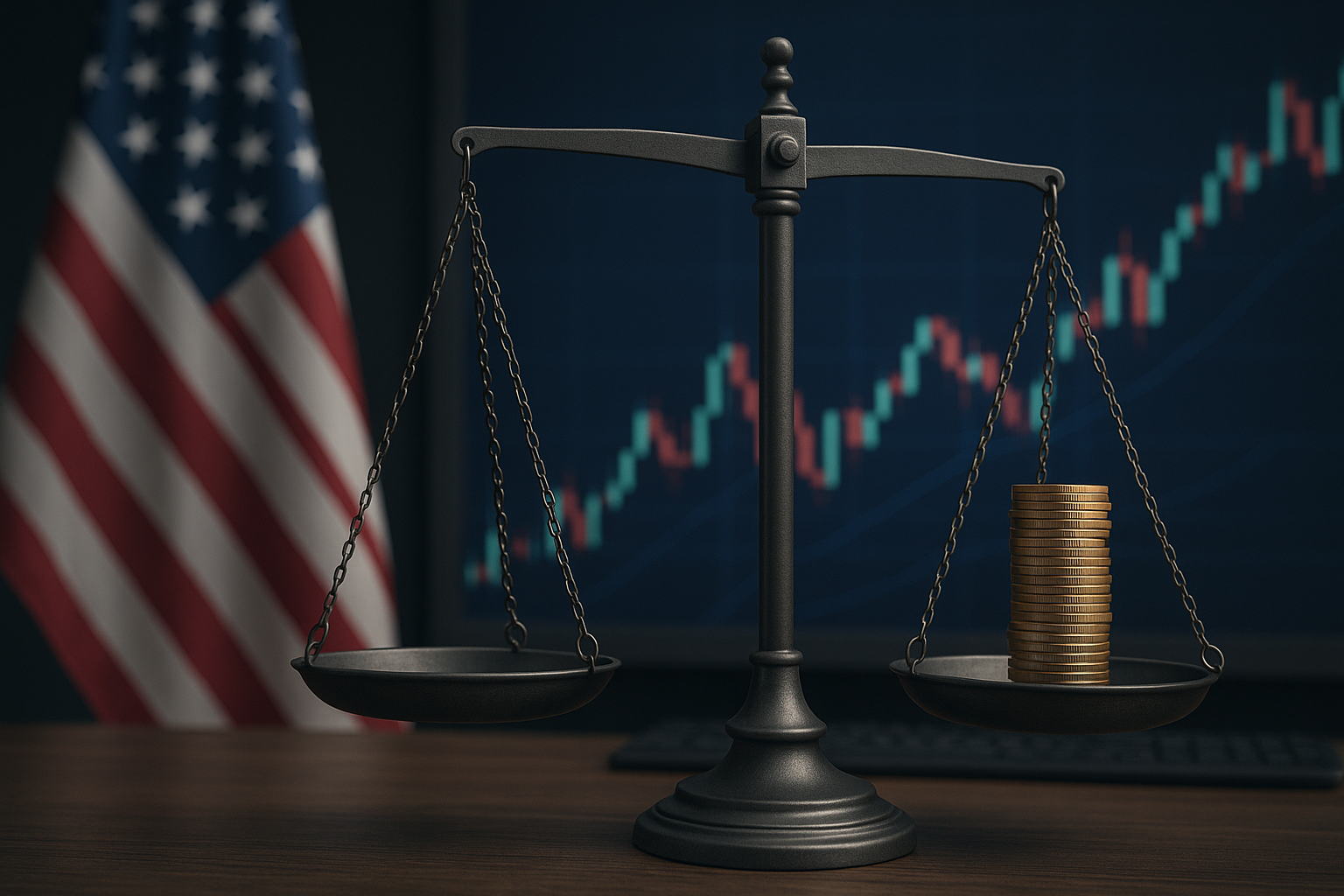As the U.S. economy balances on a political tightrope, investors are bracing for turbulence. A perfect storm is forming in Washington, D.C., where three major fiscal events—the expiration of 2017 tax cuts, another looming debt ceiling showdown, and the end of a temporary tariff pause—are converging in the second half of 2025.
Each decision on its own could sway markets. Together, they threaten to inject significant volatility into equities, bond yields, and sector performance across the board. With Wall Street already pricing in Fed policy pivots and recession odds declining, the risk of political missteps is gaining prominence among investor concerns.
The Three Fronts of Fiscal Uncertainty
1. Tax Cut Expiration
At the heart of the debate lies the fate of the Trump-era Tax Cuts and Jobs Act, much of which is set to expire after 2025. Corporate tax rates—currently at 21%—could revert to 28% or higher if a new bipartisan agreement isn’t reached. According to a Barron’s report, some estimates suggest this would shave 5–7% off S&P 500 earnings if fully reversed.
“Any uncertainty around corporate tax rates is a drag on business investment and equity valuations,” said Kate Moore, Head of Thematic Strategy at BlackRock.
2. Debt Ceiling Drama Redux
The federal debt ceiling is expected to be breached again by early 2026. While Congress reached a temporary reprieve in 2023, budget hawks are already signaling resistance to a clean raise. Past showdowns, such as in 2011 and 2023, sparked credit downgrades and market sell-offs. Fitch still maintains a negative outlook on U.S. sovereign debt.
3. Tariff Expiry Decisions
The Biden administration’s decision to pause some Trump-era tariffs—notably on Chinese EVs, solar panels, and semiconductors—is also set to lapse. Without intervention, reinstatement of these levies could increase costs for tech manufacturers and renewable energy firms, as well as risk retaliatory action from Beijing.
Why This Matters for Investors
Markets dislike uncertainty—and fiscal policy paralysis ranks high among its most disruptive forms. The stakes are elevated:
- Earnings Pressure: Rising corporate taxes directly hit net income.
- Interest Rate Sensitivity: Political brinkmanship over the debt ceiling could push Treasury yields higher, increasing borrowing costs.
- Trade Volatility: Tariff reimplementation would weigh on global trade flows and could disrupt key supply chains.
According to E*TRADE’s June Market Outlook, political developments have replaced rate hikes as the top macro risk for institutional investors in H2 2025.
Key Investment Insight
Smart investors aren’t just watching—they’re planning.
- Sector Positioning: Financials, energy, and industrials could face downward revisions if corporate taxes rise. Conversely, consumer staples and healthcare—historically resilient during policy volatility—may provide insulation.
- Bond Strategies: Long-duration Treasuries may face downside pressure from renewed debt ceiling standoffs. Consider short-duration bond ETFs or inflation-linked securities.
- Hedging Against Trade Risk: Multinationals reliant on low-cost imports or Chinese demand should be reassessed. Export-heavy small caps and domestic-focused REITs may offer better protection.
Future Trends to Watch
1. 2025 Election Dynamics
The upcoming presidential election is already shaping fiscal rhetoric. If control of Congress and the White House shifts, it could reshape the tax code, spending priorities, and tariff posture in 2026 and beyond.
2. Corporate Guidance Adjustments
As policy paths remain unclear, expect firms to guide cautiously during Q3 and Q4 earnings. Watch for commentary on tax planning, CAPEX deferrals, or exposure to trade-sensitive sectors.
3. International Investor Sentiment
Prolonged fiscal dysfunction could dampen foreign capital inflows into U.S. debt and equities. A stronger dollar may also exacerbate emerging market risk and commodity pricing.
America’s next economic move may not be made on Wall Street or by the Federal Reserve—it may come from Congress. As the political clock ticks down on tax, debt, and trade policy, portfolio managers and retail investors alike must account for policy risk with renewed urgency.
For expert coverage that translates macro uncertainty into market opportunity, keep reading MoneyNews.Today—your partner in decoding politics for smart investing.





